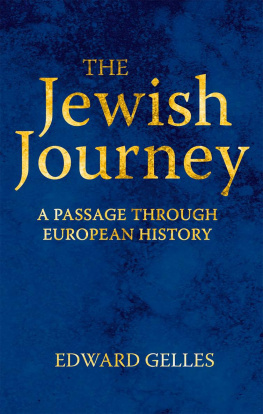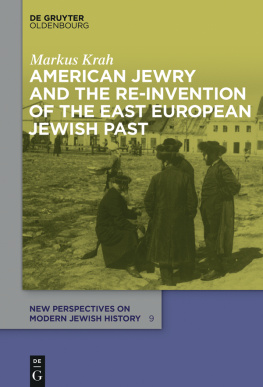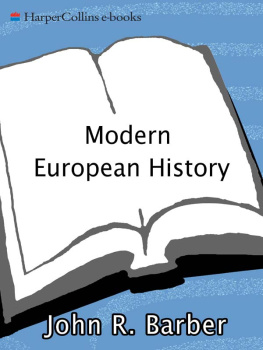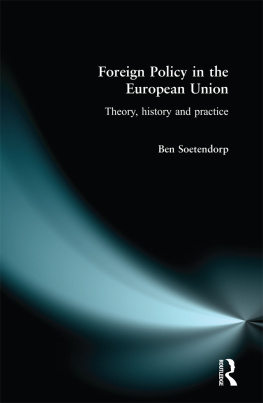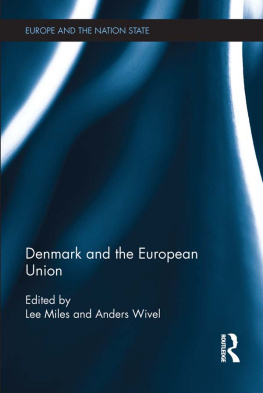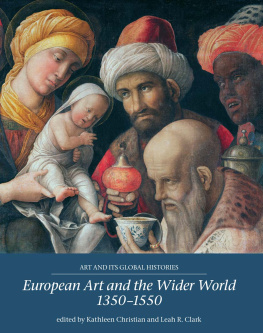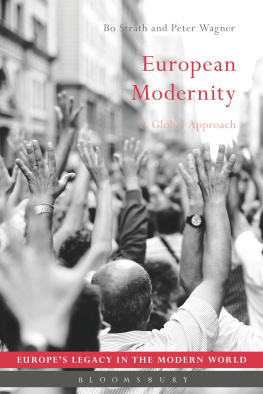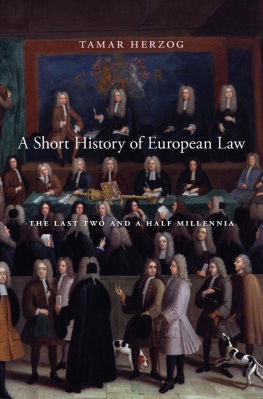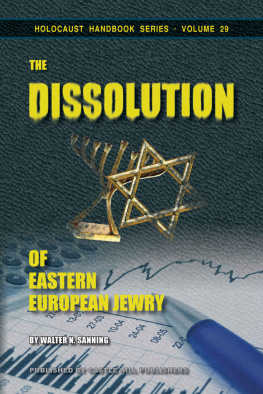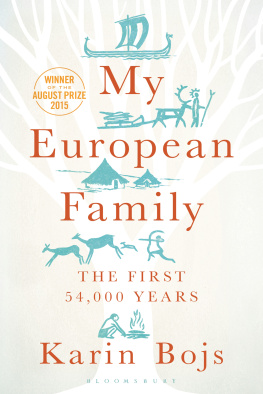Edward Gelles was born into a distinguished Jewish family in Vienna and came to England in 1938 after the Anschluss. He was educated at Balliol College, Oxford where he studied Chemistry and obtained his doctorate. After years in academic teaching and research, he has devoted his retirement to a study of European history and genealogy. His published books include An Ancient Lineage (2006), Family Connections: GellesHorowitzChajes (2008), GellesShapiroFriedman (2009), Ephemeral & Eternal: Josef Gelles, a brief life (2010), and Meeting my Ancestors: Genealogy, Genes, and Heritage (2011).
THE
Jewish
Journey
A PASSAGE THROUGH EUROPEAN HISTORY
EDWARD GELLES
Published in 2016 by
I.B.Tauris & Co. Ltd
London New York
www.ibtauris.com
Copyright 2016 Edward Gelles
The right of Edward Gelles to be identified as the author of this work has been asserted by the author in accordance with the Copyright, Designs and Patents Act 1988.
All rights reserved. Except for brief quotations in a review, this book, or any part thereof, may not be reproduced, stored in or introduced into a retrieval system, or transmitted, in any form or by any means, electronic, mechanical, photocopying, recording or otherwise, without the prior written permission of the publisher.
Every attempt has been made to gain permission for the use of the images in this book. Any omissions will be rectified in future editions.
References to websites were correct at the time of writing.
ISBN: 978 1 78453 453 0
eISBN: 978 0 85773 978 0
A full CIP record for this book is available from the British Library
A full CIP record is available from the Library of Congress
Library of Congress Catalog Card Number: available
To the memory of my brother Ludwig Gelles, my aunt Rosa Gelles, my cousins Josef and Giza Gelles, my grandparents David Mendel Griffel and Chawa Wahl, and many other relatives who perished during the Second World War
Seal of Kalonymos ben Todros of Narbonne c.1300 showing lion rampant within shield with inscription in Langue dOc (courtesy of Archives Municipales de Narbonne)
Genealogical charts and tables
PLATES |
20.1 | Ancestral origins of Edward Gelles according to FamilyTree DNA |
21.8 | Ancestry of Edward Gelles through paternal grandparents |
22.3 | Autosomal DNA matches of Thaddeus Taube with Nosson Wahl and others |
22.4 | Autosomal DNA matches of Elsa Schmaus with Nosson Wahl and others |
22.5 | Autosomal DNA matches of Nosson Wahl with Jeffrey D. Wexler and others |
Photographs
All photos are from the authors personal collection, except where indicated.
Seal of Kalonymos ben Todros of Narbonne c. 1300 showing lion rampant within shield with inscription in Langue dOc (courtesy of Archives Municipales de Narbonne)
Preface
In this volume I have brought together some of my published articles with hitherto unpublished essays in order to show how a group of families belonging to the bedrock of European Jewry was intricately involved with the millennial history of our continent. In combining biography, traditional genealogy, and a contribution from the rapidly developing field of genetic genealogy, my goal has been to weave emerging patterns into the grand tapestry of European history.
The bias towards rabbis in my selected families necessarily follows from the recognition that more than a few of these rabbis provided leadership that held the Jewish people together through the Middle Ages to modern times, and that in a more secular age, many notable people can trace their ancestry back to these Jewish spiritual leaders. This group left more records of their families and communities on which historians and genealogists can draw. Many of the Ashkenazi families in my study had old Sephardic connections.
By way of introduction, I hold up a mirror of the past to my immediate family background and outline the connections to ancient Italy and medieval France and Spain. The following essays start with the Kalonymos of Narbonne and their Carolingian connections, and proceed across the continent of Europe in times of war and peace, golden times of cultural harmony and achievement, long periods of repression and persecution, followed by the Age of Enlightenment, the rise of nationalism and two world wars, the Holocaust, and its aftermath.
A major theme that I return to in several essays is the relationship between Jews and non-Jews through the ages. Jews got on well with the Arian Goths in Septimania (modern Languedoc) and also with the Muslims in Spain and later in the Ottoman Empire. Relations between Jews and Catholics took a turn for the worse at the time of the Crusades. Conversions, under duress or otherwise, as at the time of the Spanish Inquisition or with Jacob Franks followers in eighteenth-century Poland, waxed and waned with the changing religious and political balance across the continent.
A sub-theme that is taken up in a couple of essays concerns the admixture of a Jewish Davidic strain with early European dynasties, which is still of genealogical interest and was for a long time of some political importance, giving newly established ruling families a claim to legitimacy by descent from the House of David and stimulating discussions of the divine right of kings.
For many hundreds of years until fairly recent times, Jews mostly lived in inward-looking endogamous communities and intermarriage with Christians was suppressed, but unions of Jews and Gentiles have been noted by writers since biblical days and the time of the Roman Empire. Genetic genealogy and anthropology are now promising to give us a measure of these admixtures which are the result of decades, centuries and millennia of migrations over the Asian and European continents.
I have attempted to knit together stories of unions between Jews and Gentiles (.
These milestones of a millennial journey indicate how European Jews acquired a genetic mixture of a substantial European as well as Middle Eastern character and how they have been influenced by European culture and contributed much to it.
Acknowledgements
Many correspondents, whose names appear in the following pages, have provided valuable information including DNA test results. Their contributions are much appreciated, as were discussions with numerous friends.
My particular thanks are due to the Master of Balliol College, Oxford, Sir Drummond Bone, and to Vivian, Lady Bone, for their encouragement and continued interest in my work.
Introduction A mirror of the past
This essay was written as an introduction to a collection of some of my published and unpublished articles. It could also be regarded as a short account of my ancestral roots or a prcis of my oeuvre

